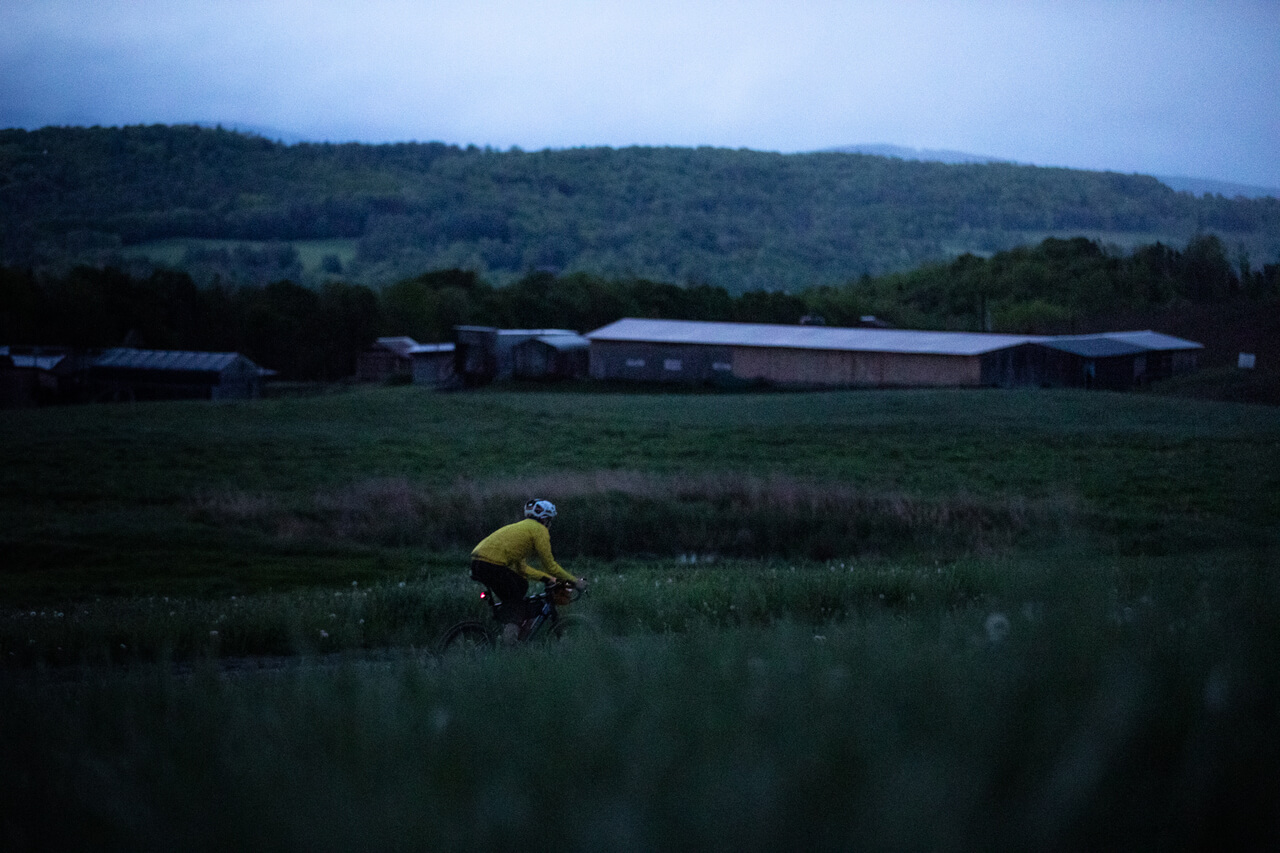UnTapped co-founder and maple fanatic, Ted King, is accustomed to riding his bike for a long time. He was a professional cyclist for ten years, with thousands of training hours to be ready for long grueling days of competition. He set out late on the evening of May 30 to ride a distance that’s entirely new to him – the length of Vermont from its northern border with Canada to its southern border with Massachusetts, 310 miles – almost entirely on gravel. With bike-packing and self-sufficiency “a thing” perhaps now more than ever, we caught up with Ted to pick his brain about ways to make the most of going long on the bike.
Hi Ted! So where did this idea come from?
There are a couple pieces of the puzzle. First is the concept of DIYgravel, where I’m riding the same distances as the events that originally lived on my 2020 gravel race calendar. So May 30 was Dirty Kanza which is always a big part of my year and I wanted to do something bigger than normal to celebrate it. Another piece is the “200-on-100” that lives in Vermont riding lore. That’s a 200-plus mile ride stretching the entire length of the state, but that’s entirely on the paved Route 100. Third, was working with Joe Cruz, philosophy professor, Vermonter, and contributor to bikepacking.com. A while ago I asked if he knew of a 200-on-100 ride but on gravel and that sent him to work. He just happened to come back to me with a completed route around the time I was scheming my DIYgravel Dirty Kanza ride. And, without a doubt the last piece of the puzzle is that I just love riding my bike and I enjoy challenges. I knew something of this magnitude was going to test me and boy oh boy, did it ever.
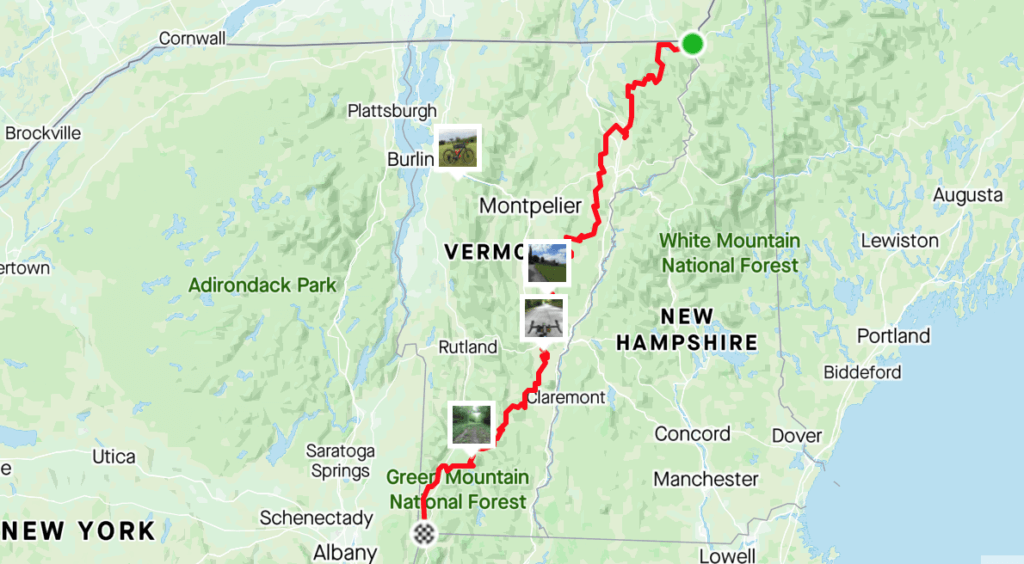
How do you prepare for something like this?
Sure, I can ride for a long time and cover a big distance, but this is still 50% longer than my longest ride by distance and almost 100% longest ride by time! There’s a huge element of stepping out of my comfort zone every now and again that I really appreciate.
For me, preparation comes down to two things: train well and pack well. For training, I might not recommend that just anyone goes for a 300 mile ride tomorrow, but challenging yourself in whatever way possible is something I highly suggest. Start by knowing that you’re capable of, recognizing what you do for training now and then lob a carrot out there to chase. Are you training 25 miles most days? Make it a goal to hit 40! Is a century in your regular wheelhouse? Go crazy and put a double century on your bucket list. Incremental training where you up the mileage is recommended, although there isn’t much stopping you from doing something huge. My best advice is slow and steady.
I also think there’s huge value in the full spectrum of training. From base endurance to high end VO2 and sprint efforts, having at least a bit of training in zones outside of “long, slow diesel” under your belt will be an advantage. After 10 hours on the bike, the same actual output that was easy early in the ride will feel like threshold later.
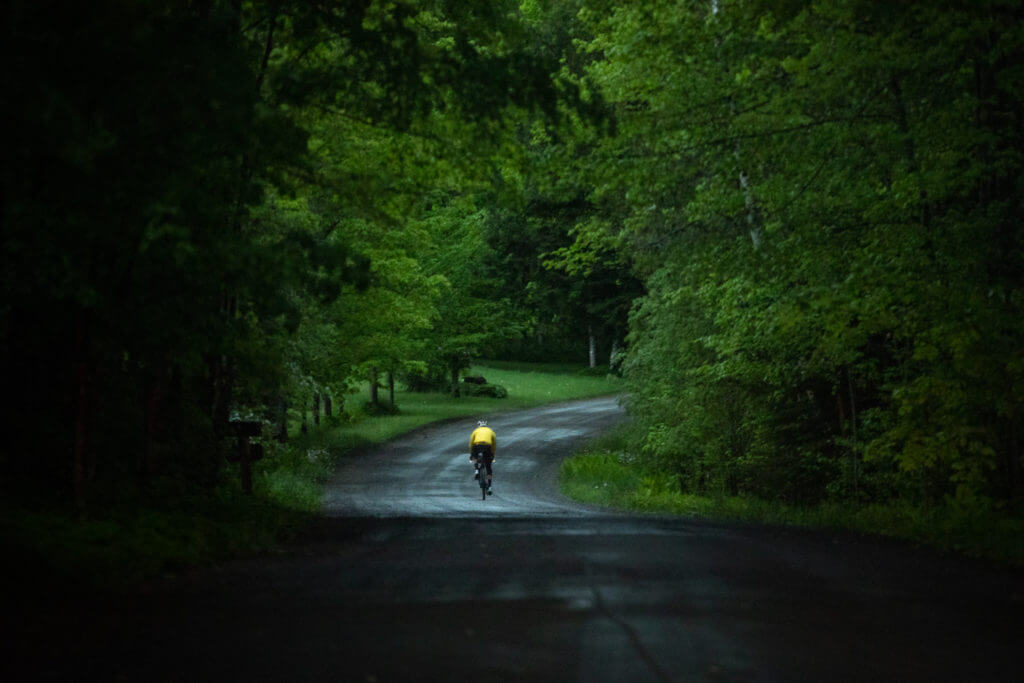
In terms of packing, you can cross every t and dot every i… or just wing it. I prefer something closer to the former. I started making a list a week out so that I could be continually adding to it as things come to mind. A spare battery and cable to charge a GPS for such a long ride, for example, might not be the most obvious things if you’re packing last minute. Being aware of the lighting situation is crucial. Are you riding through the night or at either ends of the day? I thought I was going to be finished well before sunset of the next day, so it’s a good thing I had spare lights as I rode into the next evening. And having a good bag situation is key if you’re riding longer than what you can fit into a jersey pocket. I had a handlebar bag and frame bag, for example, so I could eat, charge, and dispose of trash on the go.
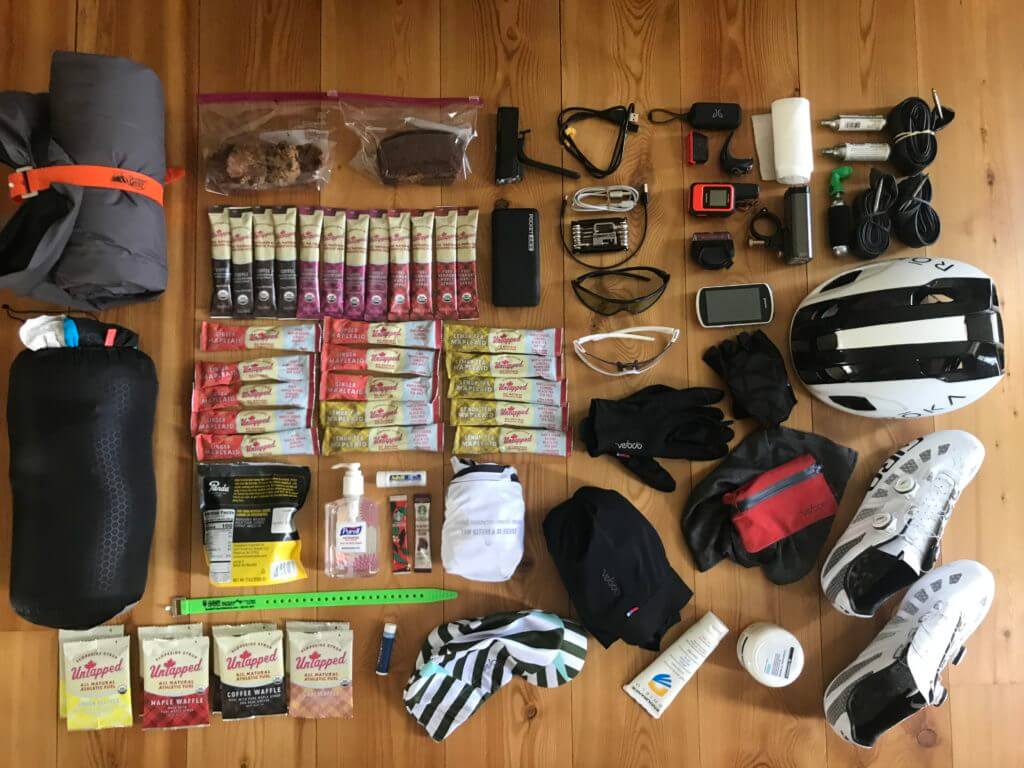
Then just standard stuff. I run tubeless tires with sealant which help fix many flats, I brought three spare tubes and three CO2s as opposed to the standard one. Again, cross those t’s and dot those i’s!
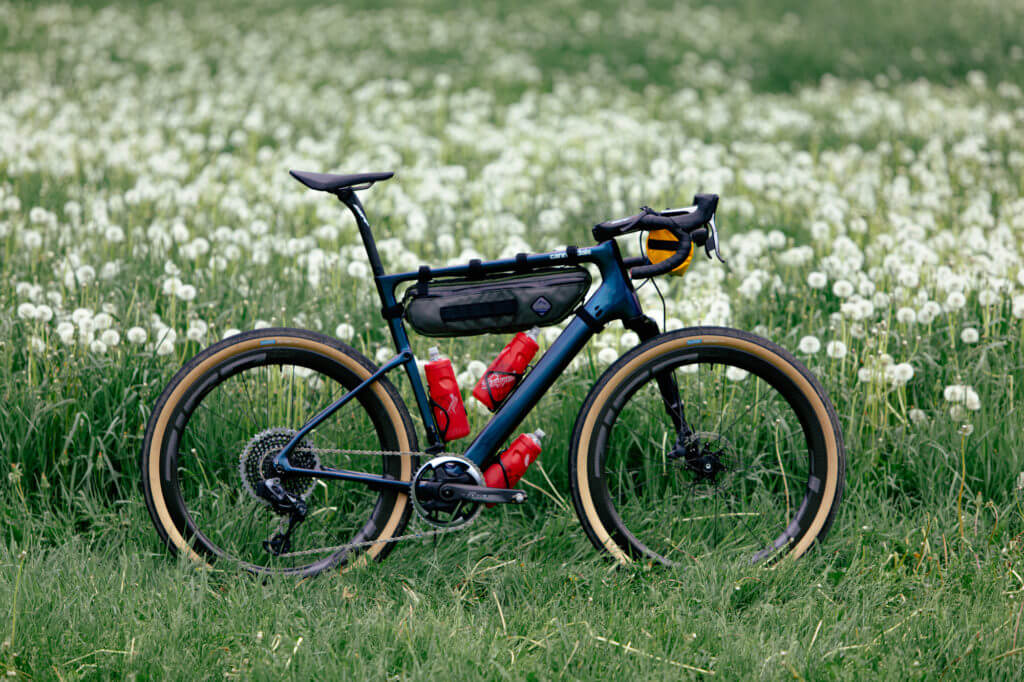
You touched on it there; fueling for any adventure is key. What did you do to consume energy and hydrate along the way? How do you remember, or at what interval do you take on board food and drink?
With a decade of practice, I’m pretty good at taking on board calories without having to think much about it. It’s crucial to be conscious of nutrition. I know people who say, “I just don’t have the stomach for it after a long, hot day” but that’s a recipe for disaster. Not to mention that you’re just selling yourself short with that view, because you could be going so much further, faster, stronger, longer.
I’m burning 700-800 calories per hour and I am to ingest about half of that. I aim to drink one bottle per hour under normal circumstances, but if it’s hot or I’m riding longer, then I do up to one and a half or even two bottles. It’s said that you lose 10% of your treshold power for every 1% loss of bodyweight from dehydration. I always have Mapleaid to drink, usually an even split of Ginger and Lemon Tea. The best part of Mapleaid is that it’s so refreshingly real. It’s a taste I never get tired of. Call that 70-150 calories in my bottles every hour.
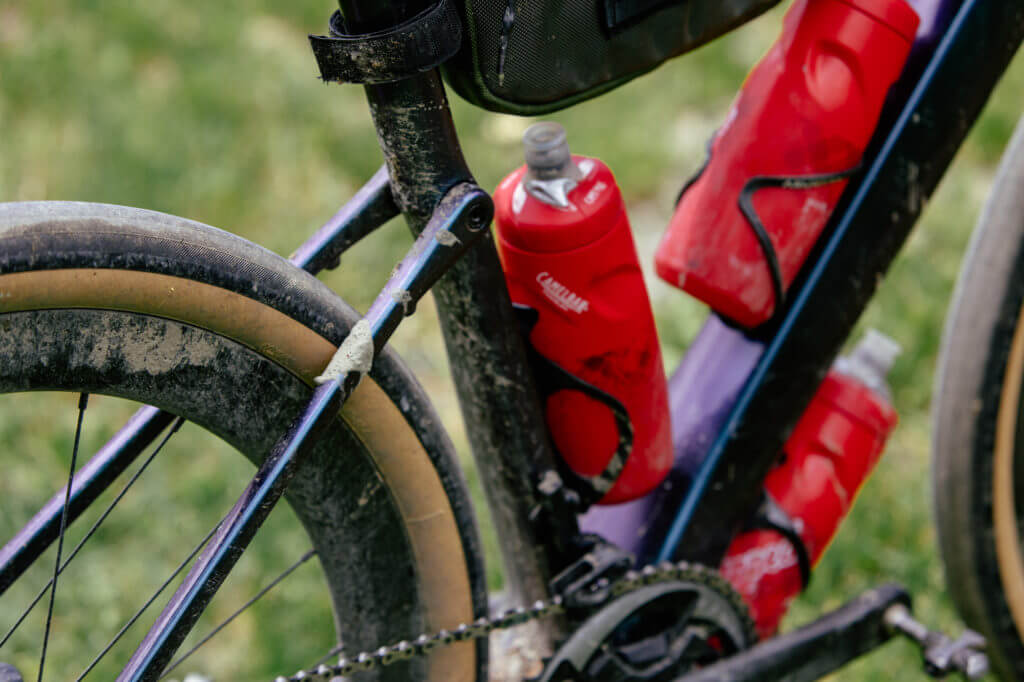
Then I aim to eat an additional 150-300 calories per hour. I love food, and that’s a big part of what inspires me. Ride to eat, eat to ride! UnTappeds go down the hatch at a rate of one per hour and I cycle between Maple, Coffee, and especially Salted Raspberry. And even though I’ve eaten hundreds of them, literally every single bite of an UnTapped waffle I think “Wow, this is so freaking delicious”. One waffle per hour is a pretty good goal. I could eat ten per hour and wouldn’t get tired of them, but that’s more calories than I need.
All makes sense. So how do you pass the time?
I do a bit of everything over the course of a long ride. I often have a single Bluetooth earbud in one ear listening to a podcast or audiobook or music, but so I can also listen for traffic or wild animals with the other ear. But I like really like to embrace the sound of riding in peace too. The wind, the sounds of gears, the rhythm of breathing. It’s nice to mentally shut off and just be out there in nature.
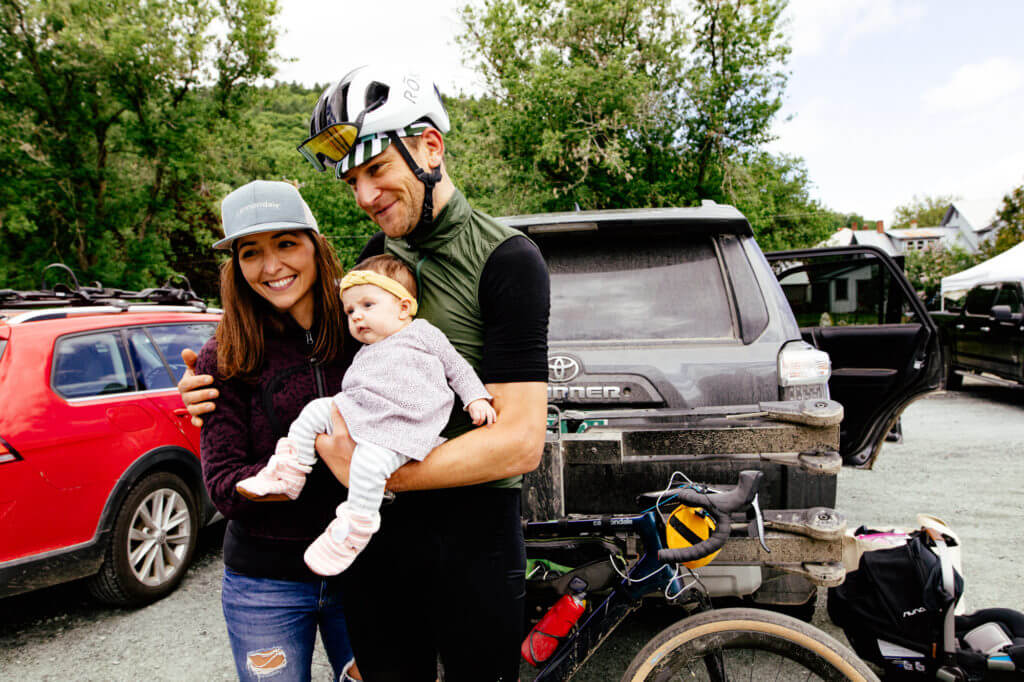
It’s nice on really long rides to have interesting places to take breaks. Vermont and New England in general have great convenience stores that have so much interesting character. Seeing special sites or vistas or dropping in on family and friends can boost spirits and change the pace in a good way.
What’s up next?!
A nap? Just kidding. I’ve come out of this pretty darn well, probably thanks to good preparation, good nutrition, and yes, a nap. DIYgravel continues to grow and be adopted by riders and racers around the world. I think doing something big to celebrate Rooted Vermont will be an important part the summer series.
